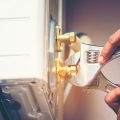Legal Obligations for Landlords
Landlords in the UK have clear legal responsibilities to ensure the electrical safety of their rental properties. The primary legislation governing this area is the Electrical Safety Standards in the Private Rented Sector (England) Regulations 2020, which sets out mandatory requirements for landlords to follow. Under these regulations, all fixed electrical installations within a privately rented property must be inspected and tested by a qualified electrician at least every five years. A valid Electrical Installation Condition Report (EICR) must be provided to new tenants before they move in, and to existing tenants within 28 days of the inspection. Furthermore, landlords are required to remedy any identified faults or potential hazards as soon as possible. Failure to comply with these regulations can result in substantial fines imposed by local authorities.
| Requirement | Details |
|---|---|
| Main Legislation | Electrical Safety Standards in the Private Rented Sector (England) Regulations 2020 |
| Inspection Frequency | Every 5 years (minimum) |
| Qualified Personnel | Registered electrician |
| Documentation | EICR provided to tenants and local authority upon request |
| Remedial Work | Must be carried out promptly if issues are found |
This robust legal framework ensures that landlords maintain high standards of electrical safety, protecting both tenants and their property investments across England, Wales, Scotland, and Northern Ireland—with each region having its own specific legislative nuances that must also be observed.
2. Understanding Electrical Installation Condition Reports (EICR)
An Electrical Installation Condition Report (EICR) is a formal document produced following an assessment of the electrical systems within a property. The primary purpose of an EICR is to ensure that all fixed electrical installations are safe and compliant with UK regulations, specifically the requirements set out in the Electrical Safety Standards in the Private Rented Sector (England) Regulations 2020.
What Is an EICR?
An EICR is carried out by a qualified electrician or approved contractor. During the inspection, they will check for any signs of wear and tear, defects, or potential safety hazards, such as faulty wiring or overloaded circuits. The report will categorise any issues found as either requiring immediate attention or needing improvement over time.
When Is an EICR Required?
For landlords in England, it is now a legal requirement to obtain a valid EICR for all private rented properties. This legislation applies to both new tenancies and existing tenancies, ensuring that every rental property meets minimum electrical safety standards at all times.
EICR Inspection Requirements
| Property Type | When EICR Is Needed |
|---|---|
| New Tenancy | Before the tenancy begins |
| Existing Tenancy | By 1st April 2021 (for properties already let before 1st July 2020) |
How Often Must Landlords Arrange EICRs?
The law states that an EICR must be carried out at least every five years for privately rented homes. However, if the electrician recommends a shorter interval based on the propertys condition, landlords must follow this guidance. Additionally, an EICR should be completed whenever there is a change of tenancy unless one has been conducted recently and remains valid.
EICR Frequency Summary
| Inspection Trigger | EICR Requirement |
|---|---|
| Every 5 Years | Mandatory for ongoing compliance |
| Change of Tenancy | If no valid EICR exists |
By understanding when and how often to arrange these inspections, landlords can remain compliant with UK regulations and provide their tenants with a safe living environment.
![]()
3. Selecting Qualified Electricians
Ensuring electrical safety in rental properties hinges on employing the right professionals. Landlords in the UK are legally required to use certified electricians when conducting safety checks, installations, and repairs. This not only guarantees compliance with regulations but also protects tenants and property assets.
Why Use Certified Electricians?
Certified electricians have undergone rigorous training and assessment, ensuring they adhere to British Standards (BS 7671). Engaging unqualified personnel can lead to substandard work, invalid insurance, or even prosecution if non-compliance results in harm.
Essential Qualifications to Look For
| Qualification | Description |
|---|---|
| Level 3 NVQ Diploma in Electrotechnical Services | Demonstrates advanced knowledge and practical competence in electrical installation and maintenance. |
| City & Guilds 2391/2394/2395 | Shows expertise in inspection, testing, and certification of electrical installations. |
| ECS Card (Electrotechnical Certification Scheme) | Proof of identity and technical competence for working on site in the UK. |
Recognised Competent Person Schemes
The UK government recognises certain schemes that verify an electrician’s competence. When hiring, landlords should check membership with one of these bodies:
| Scheme | Description |
|---|---|
| NICEIC | The National Inspection Council for Electrical Installation Contracting is a leading voluntary regulatory body for electrical contractors. |
| NAPIT | The National Association of Professional Inspectors and Testers registers competent electricians qualified for domestic and commercial work. |
| ELECSA | A Government-approved scheme offering certification for Part P of the Building Regulations. |
Verifying Credentials
Landlords should always request proof of qualifications and scheme membership before any work commences. Most certification bodies provide online registers where you can confirm an electrician’s credentials. This diligence ensures all electrical work complies with UK law and industry best practices, safeguarding both property value and tenant well-being.
4. Tenant Communication and Documentation
Clear and timely communication with tenants is essential for maintaining trust and complying with UK legal obligations regarding electrical safety checks. Landlords must inform tenants about upcoming inspections, provide them with relevant documentation, and keep thorough records of all actions taken. Here are some best practices to ensure effective communication and proper documentation:
Informing Tenants About Upcoming Electrical Checks
It is recommended to notify tenants well in advance before any scheduled electrical inspection. This not only demonstrates professionalism but also gives tenants sufficient time to prepare or rearrange their schedules. Typically, at least 24 to 48 hours’ notice is required by law for non-emergency access.
Sample Notification Template
| Notification Element | Best Practice Example |
|---|---|
| Date & Time | “We will be conducting an electrical safety inspection on [Date] at [Time].” |
| Purpose | “The check is required to ensure the safety of the property’s electrical installations.” |
| Contact Details | “If you have any questions or need to reschedule, please contact us at [Phone/Email].” |
| Access Rights Reference | “As per Section 11 of the Landlord and Tenant Act 1985, we are entitled to access for essential maintenance.” |
Sharing Documentation with Tenants
Upon completion of an Electrical Installation Condition Report (EICR), landlords are legally required to supply a copy to existing tenants within 28 days. For new tenancies, this should be provided before they move in. If requested by local authorities, a copy must be supplied within seven days.
Key Documents to Share
- EICR Certificate: Confirms that the property’s wiring is safe or lists necessary remedial works.
- Remedial Work Receipts: Proof that any faults identified have been properly resolved.
- Previous Inspection Records: Helps demonstrate a pattern of ongoing compliance.
Keeping Accurate Records
A structured approach to record-keeping benefits both landlords and tenants, providing evidence of compliance in case of disputes or regulatory checks. Consider maintaining a dedicated folder (digital or physical) containing all relevant documents for each property.
Recommended Record-Keeping Table
| Document Type | Date Issued/Received | Recipient/Authority Notified | Status/Notes |
|---|---|---|---|
| EICR Certificate | [DD/MM/YYYY] | [Tenant Name] | Supplied via email/post on [date] |
| Remedial Work Invoice | [DD/MM/YYYY] | [Contractor] | Work completed and certified safe |
| Council Request Response | [DD/MM/YYYY] | [Local Authority] | EICR provided within statutory timeframe |
5. Ongoing Maintenance and Preventative Measures
Maintaining electrical safety in your rental property goes beyond periodic inspections. To ensure tenant safety and comply with UK legal obligations, landlords must adopt a proactive approach to ongoing maintenance and risk prevention. Regular checks, prompt repairs, and fostering a culture of safety can help prevent electrical accidents and costly damage.
Regular Electrical Maintenance: Practical Steps
Establishing a routine for electrical maintenance is vital. Here are key actions landlords should take:
| Task | Recommended Frequency | Details |
|---|---|---|
| Visual Inspection of Sockets & Switches | Every 6 months | Check for signs of wear, overheating, or cracking |
| Testing Smoke & Heat Alarms | Monthly | Ensure all alarms function correctly and replace batteries as needed |
| Circuit Breaker Check | Annually | Test RCDs (Residual Current Devices) to confirm effective operation |
| Cord & Appliance Condition Check | At each tenancy changeover and annually thereafter | Inspect landlord-provided appliances for frayed wires or visible damage |
Identifying Potential Risks
Landlords should remain vigilant for early warning signs of electrical hazards between formal EICR (Electrical Installation Condition Report) inspections:
- Buzzing or crackling sounds from outlets or switches
- Sparks when plugging in devices
- Frequent blown fuses or tripped breakers
- Browning or scorch marks on sockets/plugs
Reporting & Record-Keeping Practices
Create clear channels for tenants to report issues promptly. Maintain a detailed log of all reported problems, repairs completed, and dates of routine checks. This not only demonstrates due diligence but can also be invaluable in the event of an insurance claim or legal query.
Ensuring Continued Safety Between Inspections
Empower tenants with basic safety information—such as not overloading sockets, safe use of extension leads, and the importance of reporting faults immediately. Consider providing a simple leaflet or digital guide as part of the welcome pack.
By embedding these ongoing maintenance and preventative measures into your management routine, you help ensure your rental property remains electrically safe at all times—not just during formal inspections.
6. Penalties for Non-Compliance
Failing to meet electrical safety requirements as a landlord in the UK can lead to significant legal and financial consequences. Local authorities have the power to enforce compliance, and non-compliance is taken very seriously under current legislation.
Legal Consequences
If a landlord does not provide a valid Electrical Installation Condition Report (EICR) or fails to carry out necessary remedial work, they may face enforcement actions by the local council. This can include formal improvement notices requiring immediate rectification of issues. In severe cases, tenants may have the right to report unsafe conditions directly to the local authority, triggering an official investigation.
Financial Penalties
Landlords who neglect their electrical safety duties risk substantial fines. The table below summarises possible penalties:
Offence |
Potential Fine |
|---|---|
Failure to provide a valid EICR |
Up to £30,000 per breach |
Failure to complete required remedial work |
Further fines and possible prohibition on letting property |
Repeated or serious offences |
Court prosecution, unlimited fines, and criminal record |
Other Implications
In addition to financial penalties, landlords found in breach of regulations may be subject to rent repayment orders or be unable to legally evict tenants under Section 21 of the Housing Act 1988. Persistent non-compliance could also affect insurance claims if an electrical fault leads to damage or injury, leaving landlords liable for additional costs.
Summary
The risks associated with ignoring electrical safety obligations are considerable. By conducting regular checks and maintaining up-to-date documentation, landlords not only ensure tenant safety but also protect themselves from potentially severe penalties and reputational damage within the UK rental market.


